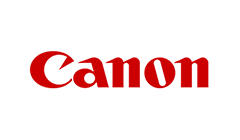Mixed model production to support platform strategy – Canon Production Printing
Overview
| Company Name / Department | Canon Production Printing |
| Contact Person | Pascal Geraeds |
| Location | Venlo, The Netherlands |
| Optional remote work | No |
| Travel expenses (own account or reimbursed by the company) | Own account |
| Housing arranged by company | No |
| Housing expenses (how much per month, own account or subsidized by the company) | Own account |
| Internship compensation | €500,- per month |
| Study program | Operations Management, supply chain management or similar. |
| ESCF community |
Full member |
| Start date |
September, 2023 |
Company Description
Canon is global leader in consumer and professional imaging. Founded in 1877 in Venlo, the Netherlands, Canon Production Printing has a long history of technical innovation and development. A key asset is inkjet, a game-changing and widely applicable imaging technology.
Project Description
Project description:
In order to speed up development cycles and time to market CPP moved into the direction of platform development.
This means we are steering towards maximum reuse of product design on the highest level possible. (Module, Unit, Part) and hence minimize the industrialization effort for future products.
Secondly, by reusing designs, we also have the benefit of “economy of scale” and lower the costprice.
Likewise M&L support to the platform strategy is to reuse processes as much as possible, this will lead to so called mixed model lines (production processes that are almost identical, and therefore can be run on the same production line) think about automotive.
Within CPP’s platform strategy, in which we make maximum use of the reuse of Modules, Units, Sub-Units and Parts, M&L wants to make maximum use of mixed model lines, in order to combine volume as much as possible, to reduce m2 and to shorten learning curves.
Goals of the project:
Investigate how production processes are allowed to differ until the mixed model concept breaks (think about, size of products, cycletimes, weight, etc.)
Deliverables:
- Is our assumption correct that a mixed model line is used when processes are largely the same?
- How do you define “largely the same”?
- How is this metric defined?
- At which value of this metric is the mixed model still applicable and when should you choose to implement dedicated production lines?
- You can look at mixed model from different points of view (learning curve, square meters, lead time, line feeding), is this metric the same from all points of view?
- How do you approach line-feeding with strongly varying lead times in a lean concept, without buffering the variation with an in-line supermarket.
- In the past we have tried to set up a mixed model line for one of our products. We finally reversed this after a year of struggling. If we now apply the above criteria to this line, was our decision to reverse this decision correct?
- We have currently already implemented mixed model lines in some of our production lines. Why do these work? Is this consistent with the above metric?
Essential student knowledge:
Supply chain management, operations management.
More information: escf@tue.nl

